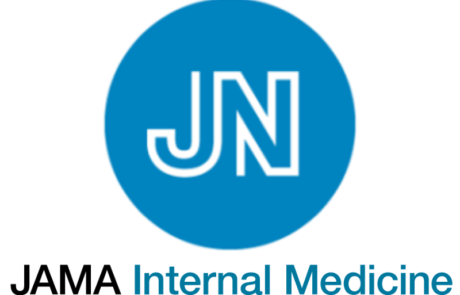



Utilization and Spending on Low-Value Medical Care Across Four States

The Effect of Increased Cost-Sharing on Low-Value Service Use
As the first of its kind, this study illustrates how strategically implementing V-BID at a large public employer led to a significant reduction in use of low-value services without leading to unintended and downstream consequences. Read more here.

Breaking the Mold: Designing Health Plans That Do Not Impede Delivery of High-Value Care
The American College of Cardiology published a synopsis of their December 2019 summit on insurance benefit design and increasing access to high-value care. Summit attendees called for clinically-nuanced plan designs that shift volume away from costly low-value services to create headroom for evidence-based therapies, without increasing health costs.

A Scalpel Instead of a Sledgehammer: The Potential Value-Based Deductible Exemptions in High-Deductible Health Plans
This Health Affairs blog presents value-based high-deductible plans as a solution to flawed high-deductible health plans. Incorporating V-BID principles in HDHPs would allow clinical nuance to inform consumer cost-sharing, encourage the use of high-value care, and limit the utilization of low-value care.

Better Health for Oregonians: Opportunities to Reduce Low-Value Care
A new report released by the Oregon Health Leadership Council and Oregon Health Authority uses the Milliman MedInsight Health Waste Calculator to identify and measure low-value services in Oregon. Authors highlight actionable opportunities to reduce low-value care in an effort to “stem the rise of health care costs and improve the effectiveness of care that is delivered to patients in Oregon.”

Association of Low-Value Testing with Subsequent Health Care Use and Clinical Outcomes Among Low-Risk Primary Care Outpatients Undergoing an Annual Health Examination
Results published in JAMA Internal Medicine show that patients who receive low-value screenings as part of their annual wellness visits are more likely to undergo downstream testing and specialist appointments. These screenings can expose patients to unnecessary harm and cost the health system $101 billion annually. Learn more about reducing low-value care.


The Need to Expand Coverage and Enhance Access to Essential Services on a Pre-deductible Basis Following COVID-19
“During the 2020 COVID-19 pandemic, 68% of adults said that out-of-pocket costs would be very or somewhat important in their decision to get care if they had symptoms of the coronavirus.” In this article, V-BID Center Director, Mark Fendrick, asserts that enhanced coverage of COVID-related essential services pre-deductible is feasible and could be financed entirely by the reduction of spending on wasteful clinical services.

COVID-19 Pandemic: An Opportunity to Reduce and Eliminate Low-Value Practices in Oncology?
This JAMA Oncology Viewpoint highlights the need for value-based cancer care during and beyond the COVID-19 pandemic. The authors suggest prioritizing meaningful patient outcomes when making treatment decisions and eliminating services with little clinical benefit.

Re-Examining the Delivery of High-Value Care Through COVID-19
In this opinion, authors John Rother, Katy Spangler, and Mark Fendrick highlight the current opportunity to align incentives for providers and consumers as medical practices and hospitals reopen. Payment policies should drive incentives to improve individual and population health, rather than increase the volume of services delivered.

Crisis into Opportunity: Can COVID-19 Help Set a Path to Improved Health Care Efficiency?
The COVID-19 pandemic led to an unprecedented decrease in medical visits and procedures, creating a unique opportunity to enhance the efficiency of health care delivery. A recent AJMC commentary, co-authored by Mark Fendrick, advocates for investing in high-value services and deterring the resurgence of low-value care as facilities reopen.

How Can COVID-19 Refocus Our Health Care System Towards Value and Crisis Preparedness?
In this recent blog post, authors discuss how the upheaval caused by the COVID-19 pandemic presents unique opportunities to shift our health care system toward one of more equity, sustainability, and value.

Stop Doing Needless Things! Saving Healthcare Resources During COVID-19 and Beyond
Recent estimates suggest that wasteful and low-value care account for nearly 25% of total U.S. healthcare spending. Warner suggests that reducing this number could result in more intelligent and efficient care, a heightened necessity given increasing patient volumes and strained resources in the wake COVID-19. Read more here.


Avoiding Low-Value Care: Learning to Be an Empowered Consumer
In this article, Dr. Matt Collins, executive vice president and chief medical officer of Blue Cross & Blue Shield of Rhode Island, explores strategies for consumers to identify and avoid receiving low-value care.


Podcast: Scott Weingarten on Reducing Low-Value Care with Help from EHRs
Increasingly ubiquitous electronic health records have the capability to aid in both identifying and reducing low-value care. Listen in to learn how Scott Weingarten, consultant to the CEO at Cedars-Senai, helped utilize this strategy along with Choosing Wisely recommendations to see real results in reducing low-value care.

Academy Health Blog Series
Part I – Viewing De-Implementation as a Feature of a Learning Health Care System: Authors from AcademyHealth’s Research Community on Low-Value Care explore the concept of de-implementation as a normal and routine part of the ever-evolving research and care delivery process.
Part II – De-Implementing Low-Value Care Services: Addressing Patient Perspectives: Authors explore how the process of de-implementing health care impacts patients.
Part III – De-Implementing Low-Value Care Services: Considerations for Providers: Authors explore consideration for providers as they address the issue of de-implementation in care delivery.
Part IV – De-Implementing Low-Value Care Services: Implications and Challenges at the Organizational Level: Authors explore issues that health systems must confront in the de-implementation process.

